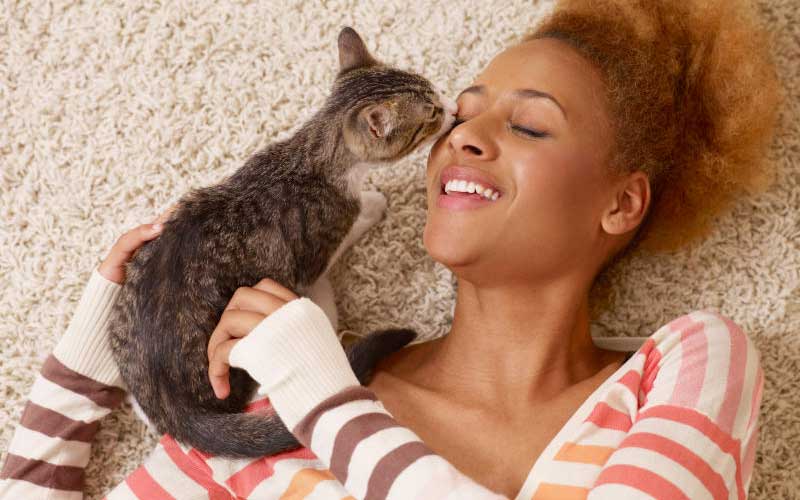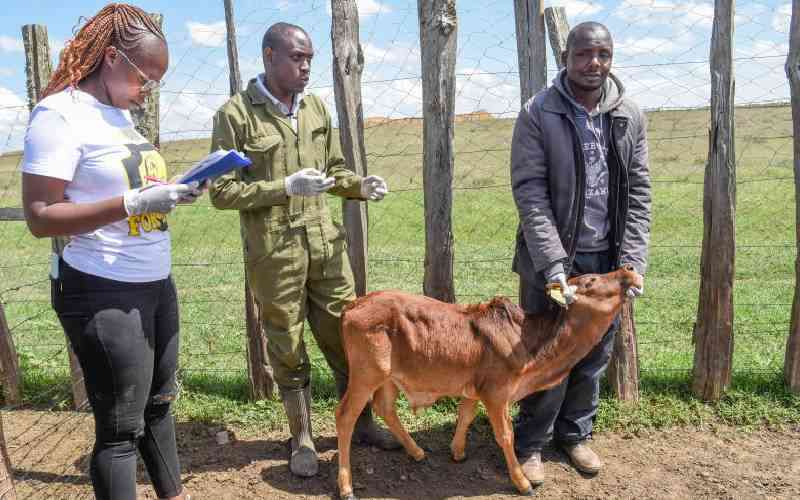
Last Sunday, the Wildlife Conservation Society in New York announced that Nadia, a four-year-old female tiger at the Bronx Zoo, tested positive for Covid-19.
The testing was done after the tiger and six other big cats, three lions and three tigers, developed a dry cough and the zoo learned that one of the animals’ handlers was positive for the virus.
Fortunately, the animals are expected to make a full recovery and are “doing well under veterinary care and are bright, alert, and interactive with their keepers”.
While at first it sounded like the universe was playing a giant Tiger King-themed prank, there’s mounting evidence that cats — wild and domestic — really are susceptible to the novel coronavirus.
In late March, a cat in Belgium tested positive for the virus after it showed signs of respiratory distress, vomiting, and diarrhoea.
The cat’s owner had contracted Covid-19 while on a trip to Italy, and the two have since been in quarantine together.
And despite early good news from the World Health Organisation (WHO) that dogs were immune to the novel coronavirus, it now appears that they can also become infected, although the risk seems to be lower in dogs than in cats.
The only known cases in dogs so far are two in Hong Kong, a Pomeranian and a German shepherd, both of whose owners had the virus. Neither animal showed any signs of disease, although the Pomeranian, which was 17 years old and had known heart problems, subsequently died after it was released from quarantine.
“Infections of dogs and cats are possible, but they’re very rare,” says Jane Sykes, a professor of medicine and epidemiology at the University of California. “It’s probably much more difficult for dogs and cats to become infected than for humans to become infected.”
Besides the cases cited above, there have been no other reports of pets, livestock, or zoo animals contracting the novel coronavirus in their natural environment.
Hong Kong tests
In Hong Kong, 23 additional animals — 15 dogs and eight cats — have been tested, and none were positive for the virus.
IDEXX Laboratories, a veterinary device manufacturer, has conducted wide-scale testing of domestic animals in the US and South Korea using a novel PCR test they developed — similar to the one used in humans — to detect viral RNA in animals.
They have not found any positive cases among 4,000 dogs, cats, and horses tested.
However, new evidence suggests the risk of the novel coronavirus — a zoonotic disease that is thought to have originally passed to humans from bats — infecting other animals is real.
A paper posted to the pre-print site bioRxiv on March 31 showed that cats and ferrets were easily infected with SARS-CoV-2, the official name of the virus, and that it replicated in the animals’ upper respiratory tracts.
The study also showed that the virus can spread between animals, as one previously healthy cat tested positive after contact with another infected cat.
The scientists say that, just like in humans, the virus transmits between cats through respiratory droplets.
“There’s no evidence or risk that we perceive of that being a transmission pathway — either if a dog is exposed to coronavirus that they’re going to be able to pass it on to another dog or to a person,” says William Sander, an assistant professor of preventive medicine and public health in the Department of Veterinary Clinical Medicine at the University of Illinois, who was not involved in the research.
Sykes, who was also not part of the study, says that one reason cats and ferrets might be more susceptible to the novel coronavirus is that their ACE2 receptors — which the virus latches onto in order to enter a cell — are more similar to human ACE2 receptors than dogs’ are.
“Based on what we know about the receptors for the virus in cats and ferrets, it does seem like cats and ferrets may be more likely to truly become infected and shed the virus at any great extent,” she says.
This is not the first virus to jump from humans to household pets. In 2009 during the H1N1 influenza outbreak, a dog in New York became infected with the virus, and several cats and ferrets developed respiratory signs and even died as a result of the infection.
There were also reports of a small number of cats in Hong Kong becoming infected with the original SARS coronavirus outbreak in 2003.
It’s important to remember that these cases of human-to-animal transmission are rare. In addition to the coronaviruses that infect humans, there are also several feline and canine coronaviruses that cause either respiratory or intestinal symptoms in cats and dogs.
According to Sykes, if your pet is sick, it’s much more likely they have an infection that is specific to their species, not SARS-CoV-2.
“People need to be aware that there’s lots of causes of respiratory disease in dogs and cats, and respiratory disease is common in dogs and cats,” she says.
There is no evidence that dogs and cats can infect a human with the virus, but could pets act as a vector if an infected person coughs or breathes onto their fur? According to Sander, the likelihood of that happening is extremely low.
“Infections of dogs and cats are possible, but they’re very rare,” he says. “The virus can survive on porous surfaces like cardboard for up to a day.”
The bigger risk, Sander says, is that if you’re petting someone else’s dog or they’re petting yours, you’re likely too close to them. “We’re practising social distancing, so you want to have six feet between you and that other person,” he says. “Most people have their dog on a six-foot leash, so I would probably try and avoid petting another person’s dog anyway just from that standpoint.”
The advice right now from the CDC is that if someone who tests positive for the virus has a pet, they should restrict contact with their animal to reduce the risk of transmission from person to pet.
Most importantly, Sander and Sykes both say that this is a time to be embracing the emotional support you receive from your animal.
“I just don’t think that people should be panicking about this at this time. Remember that human-to-human transmission is driving the spread of this virus,” Sykes says.
“When we’re more stressed than ever, this is a time to be enjoying the human animal bond and really enjoying time with your dog and your cat.”
 The Standard Group Plc is a multi-media organization with investments in media platforms spanning newspaper print
operations, television, radio broadcasting, digital and online services. The Standard Group is recognized as a
leading multi-media house in Kenya with a key influence in matters of national and international interest.
The Standard Group Plc is a multi-media organization with investments in media platforms spanning newspaper print
operations, television, radio broadcasting, digital and online services. The Standard Group is recognized as a
leading multi-media house in Kenya with a key influence in matters of national and international interest.











